The Papacy
5th century Rome, overrun by tribes from the north, was in ruins. Emperor Constantine I (the first emperor to be baptized a Christian) had foreseen the threat and just in time established a second center for the Roman Empire in Byzantium, which was later renamed Constantinople.
From their base in Byzantium the Church eventually sent bishops back to Rome to control the anarchy. The bishops, called "papa", or popes, set themselves as de facto governing power and used strong measures to keep order.
Eventually and despite the vow of poverty they accepted gifts from the nobility and became very wealthy. As more land was gifted there came the obligation to defend it but the Church’s band of Swiss soldiers and mercenaries, hired to protect the papal residence, was insufficient. Thus the popes were obliged to solicit kings for assistance, who used the pontificate to advance personal agendas. The spiritual focus of the Church was all but lost when the popes became landowners.
The gifting of land started in 756 with Pepin III, German king of the Franks (son of Charles Martel, Charlemagne's father). Pepin had ousted the Lombard army from Italy at the request of Pope Steven II. To show his fidelity he offered the pope some cities he’d captured, notably Ravenna. Steven accepted the generous gift and called his new territory the Papal States or Pontifical States.
In the meantime Europe's burgeoning countries were continuously planning attacks one each other when they should have focused on Muslim expansion as more disgruntled tribes became adepts. Already the Arab Muslims had occupied Iraq, Syria, Persia and Palestine, and were capturing Mediterranean port towns that had been conquered during the Roman Empire. Spain had already been taken by the Moors (Muslims from North Africa) since 711.
Pope Adrian I, elected unanimously in 772, had previously helped Pope Steven III in establishing the Papal States but found himself caught in an uneasy alliance with the Lombards, a German tribe with strongholds in Italy who'd threatened to occupy Rome. Adrian asked Charlemagne, king of the Francs, for help and the king was able to push the Lombards back. Following the footsteps of his father Pepin, Charlemagne donated part of the reoccupied territories.
Adrian was responsible for many of the buildings and churches that made Rome unique. He repaired the fortifying walls, strengthened the embankments along the Tiber River and had four aqueducts built. He was dedicated to raising the conditions of the poor and established Domus Cultae, or community farms, to generate income and feed the hungry. He was opposed to Iconoclasm, a ban on religious images practiced for a while in the Eastern Church in Constantinople.
The mannerisms and personality of Pope Leo III, elected in 795, did not win himself friends. He was actually imprisoned for perjury and adultery but escaped and in 800 he was reinstated as pope under the protection of King Charlemagne. Leo united the Papal States under the title "Holy Roman Empire" and, out of gratitude for services rendered, crowned Charlemagne the first "Holy Roman Emperor". The title was supposed to be the revival of the ancient Roman Empire but the true motive was politics, and the emporors were predominantly German or French, who could best protect the Church's holdings. Predictably, from the very start, the Holy Emperors and the Holy Sees quarreled conitnuously.
By the 11th century the Church was a labyrinth of schemes where the papal position was bartered rather than granted by a council. In 1049 Pope Leo IX spearheaded a campaign to keep non-clergy from meddling in Church politics. His successor Pope Gregory VII followed his example but, despite a decree forbidding kings from appointing church officials, Holy Roman Emperor Henry IV, king of Germany, ignored the ban.
The bickering between Pope Gregory and King Henry continued. In 1076 Henry convened a council, at Worms, to depose Gregory and independently elected Antipope Clement III. Gregory promptly excommunicated Henry, who was forced by a group of powerful nobles to ask forgiveness. Gregory withdrew the excommunication after Henry knelt in the snow for three days but the nobles deposed him as emperor notwithstanding, which incited a civil war in Germany.
Pope Urban II was elected in 1088. However, the first six years he was kept out of Rome because of Clement III. Urban continued the reforms envisioned by Gregory VII to keep the nobility from interfering in papal affairs while the French and German kings continued to meddle in the election process and chose their own popes.
In 1095 Byzantine Emperor Alexius I asked Urban for aid in fighting the Seljuk Turks who were advancing towards Constantinople. Urban saw this as a way to strengthen his papal position and launched the first of nine major Crusades. The Crusades were originally intended to protect pilgrams in Jerusalem and the pope's cry "God wills it!" drew kings and nobility around Europe. Things got out of hand and, in 1099 Jerusalem was captured and ransacked. Urban strongly condemned the massacre but there was nothing he could do about it, the tone had been set. Two years later Jerusalem, Jordan and Lebanon were united under the name Latin Kingdom of Jerusalem. The Crusades condensed the ongoing antagonisms between the Popes, Nobles, Kings, Emperors, Roman Catholics, Byzantines and Muslim tribes, igniting a clash of cultures. The entire Mediterranean had become a battleground.
The Italian monk Arnoldo di Brescia challenged the Church’s material wealth but all his writings were destroyed by Pope Innocent II. After Innocent died Pope Eugene III sent the monk to Rome, which at the time was in ruins, to do penance. Arnoldo embraced the cause of the citizens who demanded equality and became their leader. He was excommunicated but stayed in Rome until Pope Adrian IV forced him into exile. Adrian asked King Frederick I to capture him and turn him over as a political activist. Arnold was executed in 1155, and Frederick was crowned Holy Roman Emperor.
Pope Innocent III launched the 4th Crusade in 1203, which was entirely financed by Venice. Against the pope’s wishes the crusaders sided with the Venetians in their primary goal, which was to control trade in the East. Their main objective was to capture Constantinople - presumably the ally. The crusaders seized and sacked the city and, in 1204, established the Latin Kingdom of Constantinople.
The discord between Innocent and Holy Roman Emperor Frederick II (son of Henry VI, king of Germany and Sicily) brought the conflict between Papal Powers and Imperial Crown to a breaking point. Frederick had set off later than the others for the 5th Crusade, which started in 1219, and because of this he was excommunicated for the first time (later withdrawn). Without the pope’s consent Frederick crowned himself Kng of the Latin Kingdom of Jerusalem.
European nobles and merchant families who had made fortunes off trade with the East were taking sides; the Guelphs, who were pro-pope and the Ghibellines, who were pro-emperor. Verona, one of the cities in the Lombard League, was the setting for the story of Romeo and Juliet separated by the Guelph-Ghibelline feud.
In 1230 Pope Gregory IX set up the Papal Inquisition to combat heresies, notably the Albigenses from Southern France. Though they were labeled as heretics the Albigenses weren’t technically Christians, but Cathars who adhered to the Manichaean/Zoroastrian theory of duality - which was the main principle of Gnostic thinking therefore classified as a heresy. Gregory dispatched friars of the Dominican order to conduct inquests. People labeled as heretics had one month to confess and repent. Otherwise there was a trial where imprisonment and torture were the usual sentences. By 1254 the trials were secret with no right to council and not only was the accused tortured; so were his witnesses. Executions, or auto da fé, were public, where the sinner was burned at the stake.
For the next twenty years a string of popes and anti-popes divided the Church. Clement was succeeded by a cardinal from Aragon, Pedro della Luna, who had initially allied with Urban but later sided with Clement. Pedro became Pope Benedict XIII in 1394, elected by the cardinals in Avignon. He’d promised to abdicate if it would end the schism but reiterated when the moment arrived. He held onto his papal crown even after two councils (Pisa and Constance) demanded his resignation. He was finally deposed in 1417.
Pope Calixtus III, elected 1455, and Pope Alexander IV, elected in 1492 by a bribed conclave, were of the infamous Borgia family. Alexander united the Christians against the Ottoman armies and sent missionaries to the New Continent. His talents as administrator were undermined by his extravagant lifestyle and abuse of power. As cardinal he had four illegitimate children, which included the Cesare Borgia and his sister Lucretia.
Recurring antagonisms between Alexander and the French king Charles VIII provoked France to invade Italy, which started the Italian Wars (1494-1559.) Charles seized Naples but the pope held his ground in Rome and placed his son Cesare as head of papal administration. Though an excellent administrator Cesare used Church money to build his palaces and maintain a luxurious life. He was ruthless in eradicating his opponents, generally by poisen. He used his sister to fit his ambitions and had an affair with her as well.
Cardinal Giuliano della Rovere of Milan (nephew of Sixtus IV) was elected in 1503 and took the name Pope Julius II. The rivalry between the independent Italian city-states continued, with each city soliciting foreign alliances to reinforce and defend their regions. The pope paid to take back the Papal States, and recovered Ravenna, Rimini, and Faenza from Venice. In 1510 Julius formed the Holy League to combat French intrusion. Though he himself acquired the pontifical seat through corruption he passed a decree to reform future elections.
Pope Leo X, son of Lorenzo de’ Medici of Florence, was elected in 1513. Leo continued the intellectual and artistic patronage initiated by his famously wealthy banking family. His major concern was defending the Papal States from the French armies under King Francis I. Leo sold "indulgences" that annulled one’s sins, to finance the restoration of Saint Peter’s Basilica. A German monk, Martin Luther, to put his complaints down on paper, which started the Reformation Movement. Leo excommunicated Luther in 1521 but could not stop the rise of Protestantism that contested the Papacy's lavish lifestyle and political intrusions.
Pope Clement VII, the illegitimate child of Giuliano de’ Medici, was elected in 1523. Raised by his uncle Lorenzo after his father was killed in the Pazzi Conspiracy, Clement was named archbishop of Florence by his cousin Pope Leo X and was later promoted to cardinal. His attempts to end the Reformation failed, not realizing how powerful Martin Luther had truly become. Clement was succeeded by Pope Paul III in 1534. Paul started the Counter-Reformation, or Catholic Reformation. He backed Loyola and the new Jesuit Order which became an important part of the badly needed reforms in the Catholic Church. After several false starts Paul was able to organize The Council of Trent (1545-1563) where the powers within the Church were reviewed.
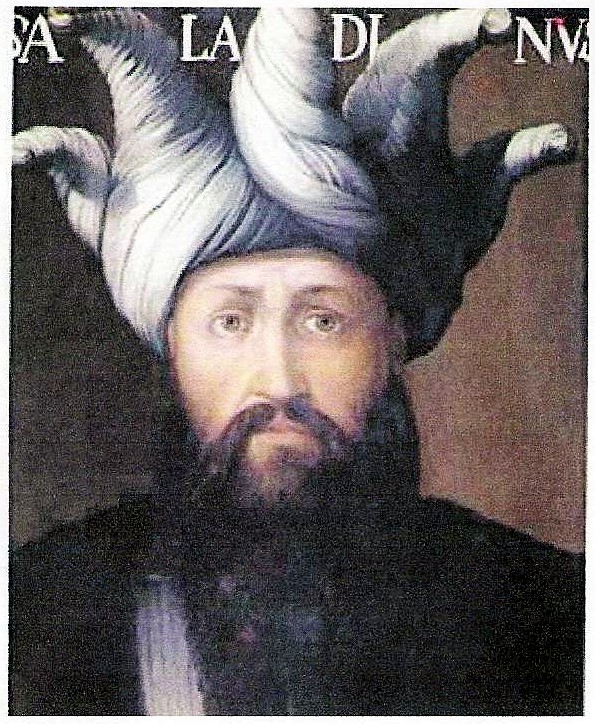
Alexander III, cardinal, and advisor to Adrian, was elected pope in 1159 but the vote left many cardinals disgruntled. They independently elected Antipope Victor IV, which did not go well with Alexander’s supporters. Alexander asked Frederick to relinquish part of his territory to the Papal States. Frederic said no and sided with Victor. He forced Alexander into exile but the pope made a comeback with the help of the Lombard League; an alliance of cities in Northern Italy formed essentially to counter Frederick’s military agendas.
At the same time Alexander attempted a third campaign against the Muslims but could not muster enthusiasm for the expedition and in 1187 Jerusalem was captured by the Egyptian sultan Saladin. Born in Tikrit of Kurdish descent Saladin was more interested in academics and practicing the true Sunni faith than in warring, and was well respected.
Avignon became the papal residence for seventy years with French popes essentially under the dominance of the kings of France. The period was called the Babylonian Captivity, and ended when Pope Gregory XI moved the papacy back to Rome in 1378. Gregory’s untimely death led to riots in Italy to keep the papal residence in Rome. Citizens demanded an Italian pope and in the spring the cardinals chose Pope Urban VI from Naples.
From an unobtrusive and honest man Urban became insufferable to a point where the cardinals nullified his position. With the excuse that the riots had intimidated them they elected Antipope Clement VII, a cardinal from Switzerland who had served as legate for Pope Gregory XI. Clement set up court in Avignon, feelings were hurt and the divide became official with the Papal Schism in 1378.
The monk Savonarola was an outspoken advocate of reform and popular with the people of Florence fed up with the popes’ extravagances. Savonarola became politically active when he was made 1st vice-vicar of the Dominican order in Tuscany.
His uncanny ability to foresee future events made him an outright celebrity and at first his stern opposition to papal opulence was refreshing. When Alexander was deposed by the French, Savonarola was given temporary control of the city until his unbending and unforgiving zeal became intolerable.
He was kicked out and summarily killed. Machiavelli was at first attracted to the man but not for long.
Saladin, by Cristofano Altissimo
16th c. Uffizi galleries, Florence
The word "Catholic" stems from Greek: Katholikoi, which means universal. Ignatius of Antioch was the first to use it in a letter to the Smyrnaeans in 110 AD to identify the Church from heretics, which was anyone with a different point of view.
The Catholic Church places St. Peter as the first pope around 60 AD. In reality there is no evidence of Peter ever holding an official position, as with the next generations of saints classified as popes. They were never asked to become the pontificate of the Church, and would most likely have refused had the opportunity presented itself.
The word pope, or papa, means "father" and in Byzantium it was used address bishops and clergy. Only later did the word identify a specific leader of the Church with Damasus, who officially called himself "Il Papa" at the height of the internal schism in 366.
Other titles: Summus Pontifex, Pontifex Maximus, Servus servorum Dei, and Holy See.
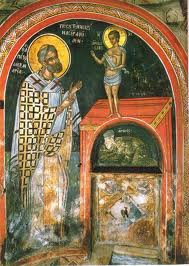
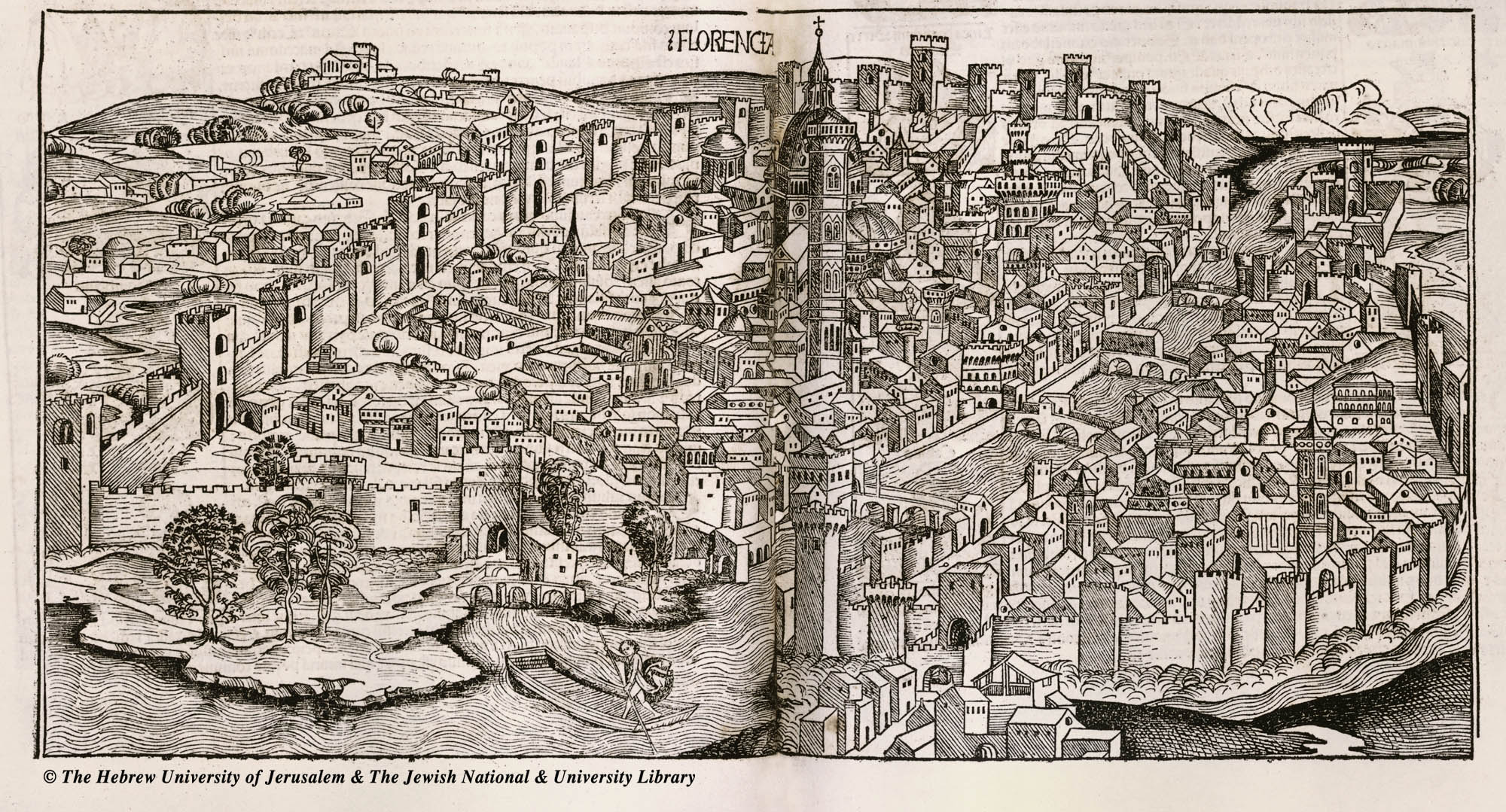
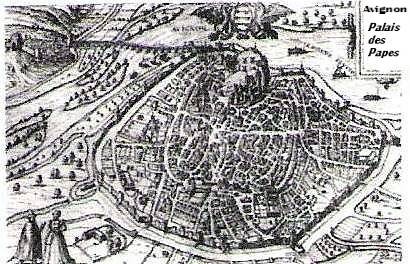
Pope Julius II hired Michelangelo Buonarotti to paint the Sistine Chapel in the Vatican, and finish work on Saint Peter’s Basilica. The pope had redesigned the plan for Saint Peter’s with the architect Bramante. After the architect’s death he gave the project to Raffaello, then to San Gallo, and finally to Michelangelo.
Notice the primary colors Michelangelo uses for the clothes which would influence Mannerists at the end of the Renaissance.
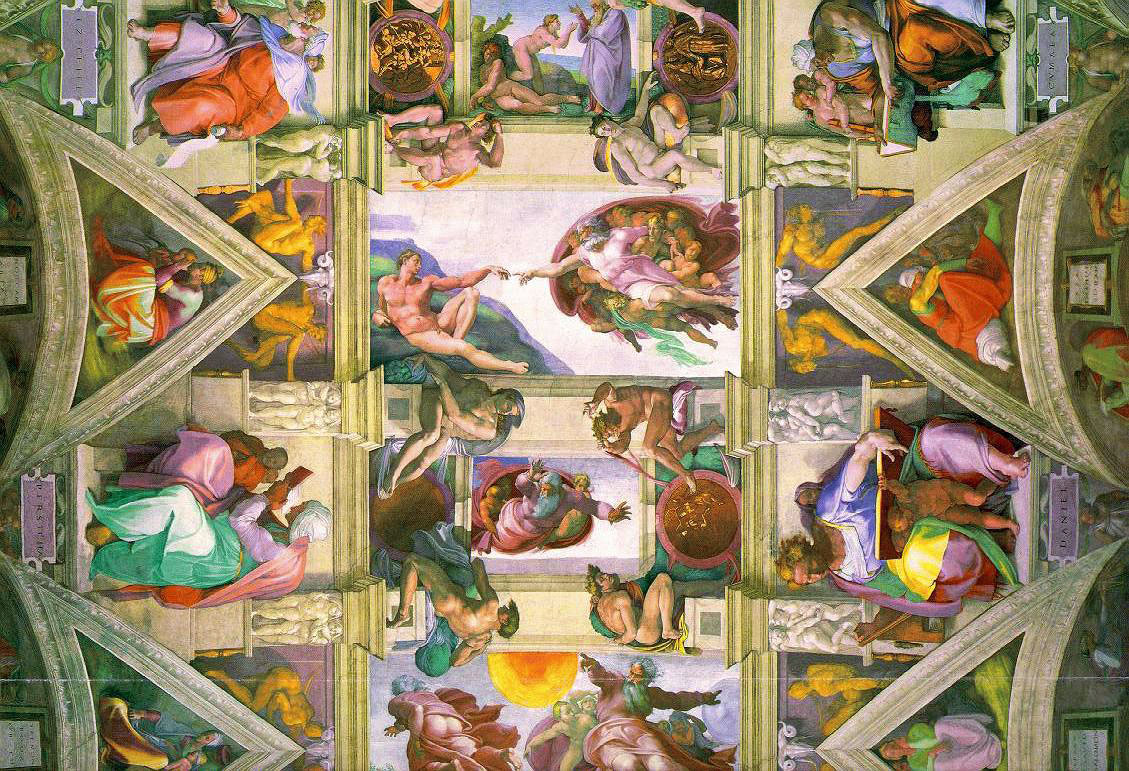
“The Roman Question”
Italy was unified in 1870 and this included the Papal States. The popes had refused to recognize the legitimacy of the Italian government and barricaded themselves inside the Vatican walls for almost fifty years. The issue was finally resolved in 1929, with the "Lateran Treaty" between Pope Pius XI and Benito Mussolini.
In 1115 Countess Matilda of Tuscany died and left her lands to the Church. The prime real estate was a mixed blessing. Florence was the most important and wealthiest of cities in Europe, everyone wanted it and the new property needed soldiers to stave invadors. Generally the city avoided attacks through mediation but not always.
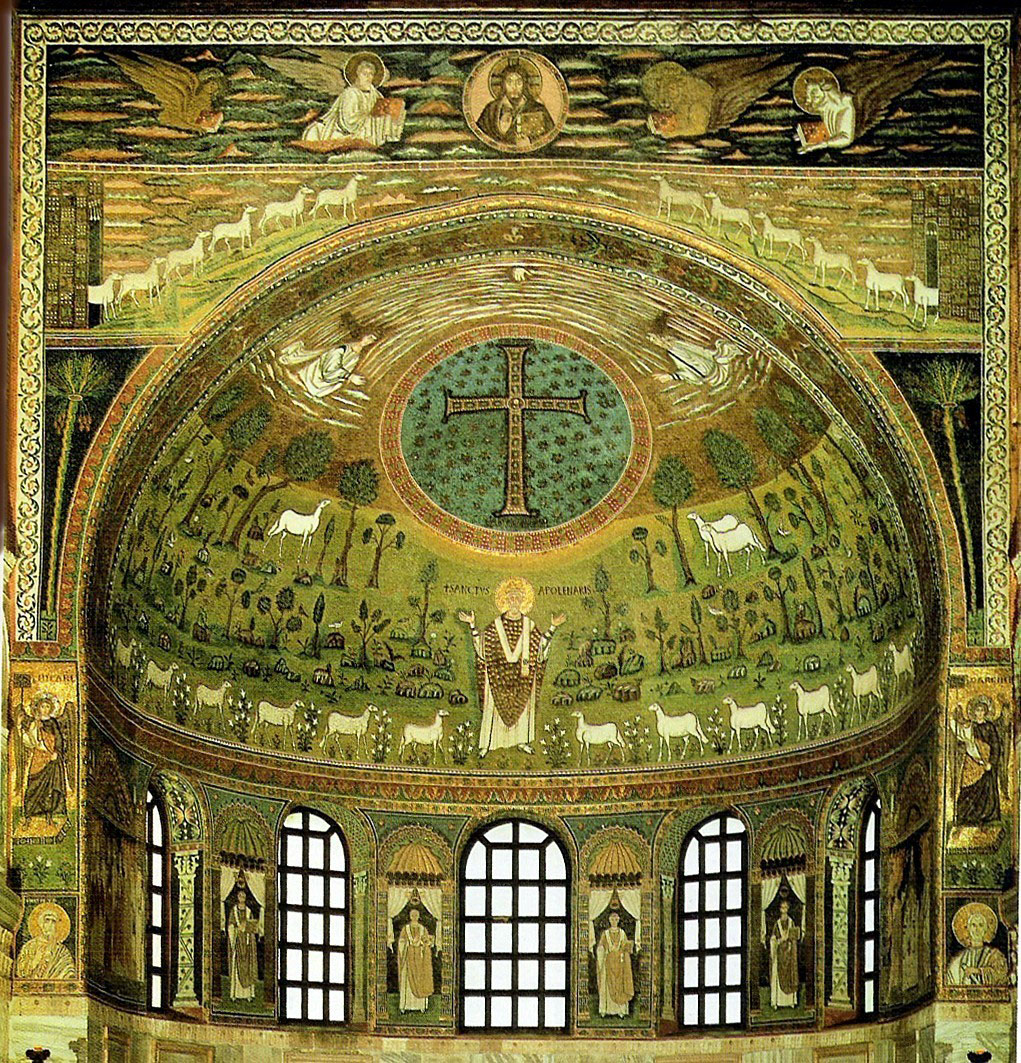
Ravenna